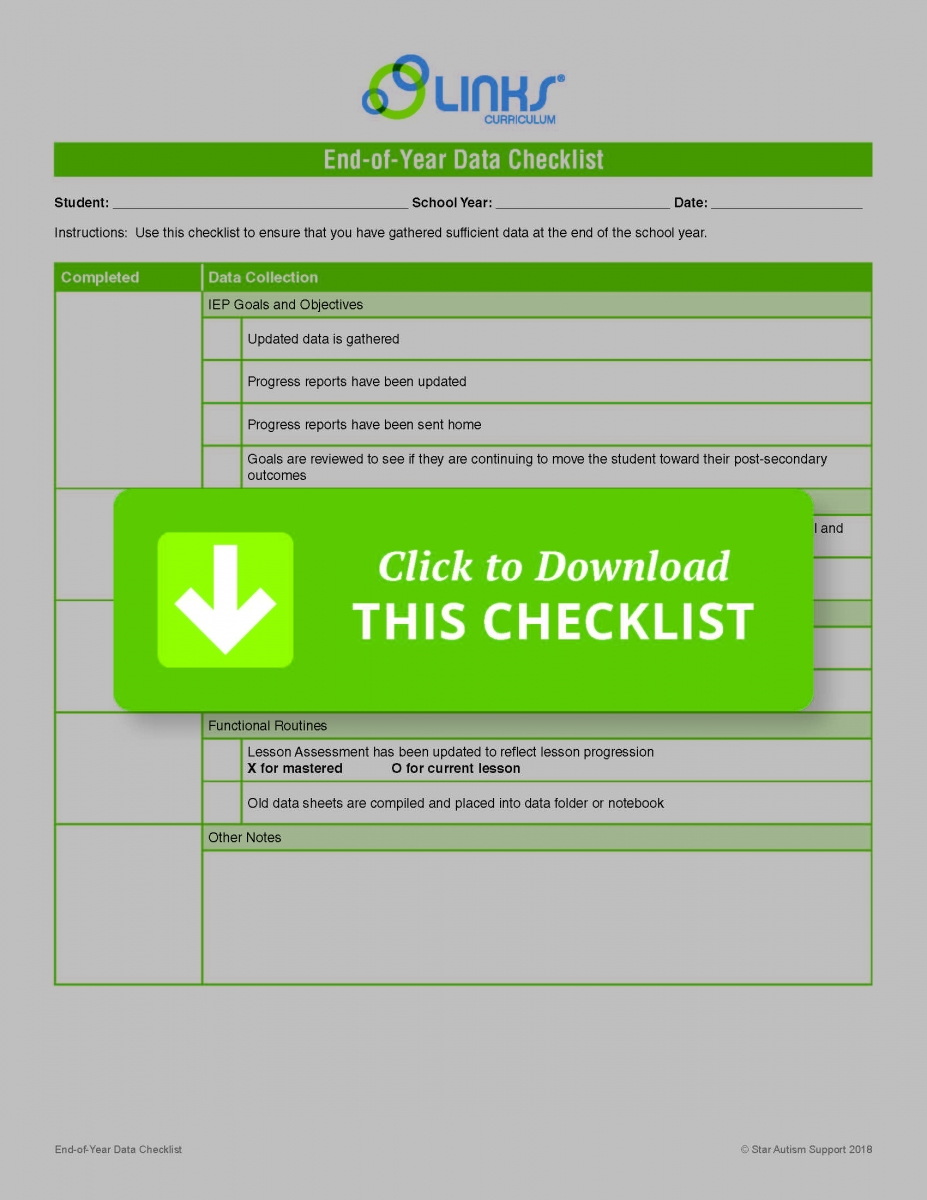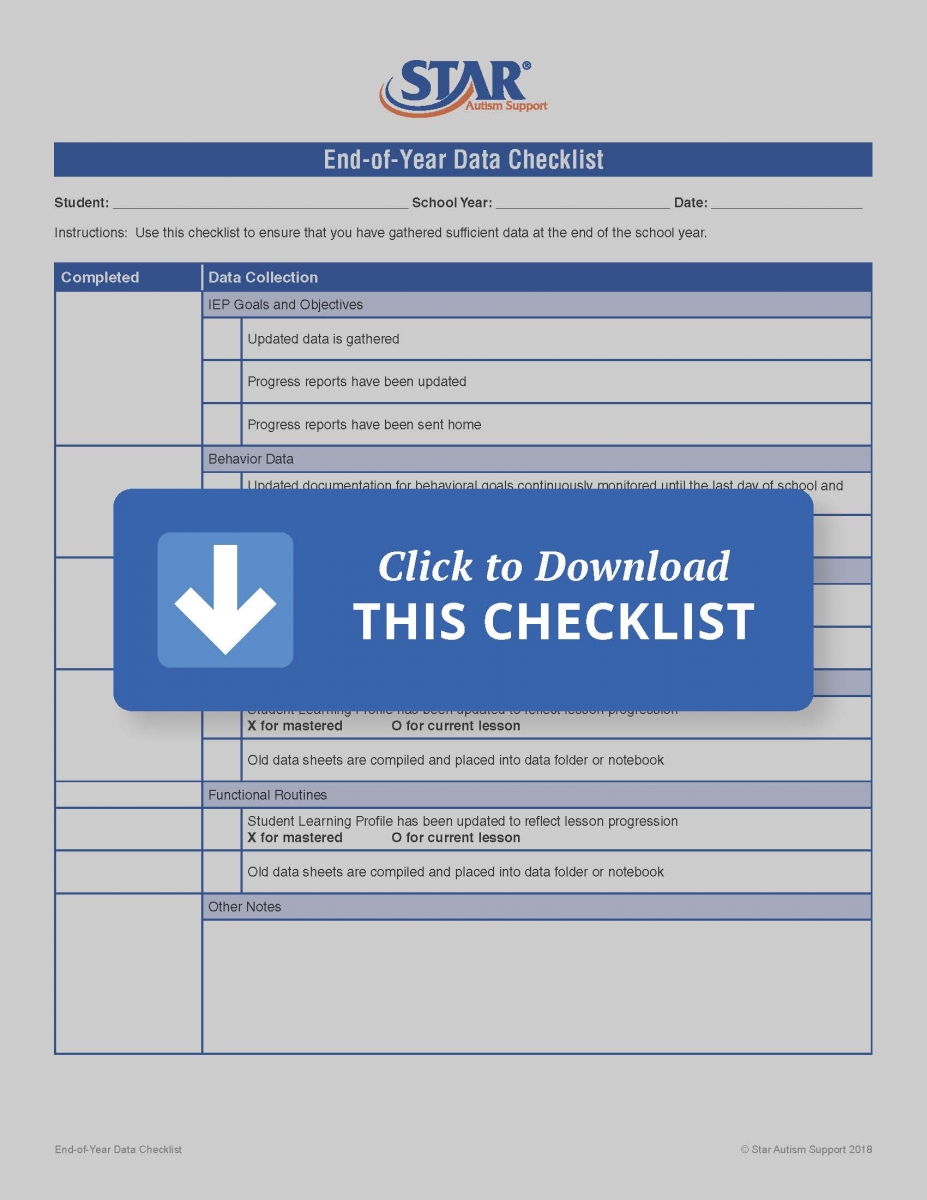Smooth Sailing into Summer: Tips and Tools for End-of-Year Data Collection
This is the time of year we all look forward to. The end of the school year means award ceremonies, graduations, summer vacations, sunshine, and a much-needed break. But before you jump into summer, it’s important to take the time to observe the ways in which your hard work has paid off by collecting student progress data.
Why is end-of-year data so important? We all know that reporting annually on IEP goals is required, but here are some other reasons to gather end of year data:
o Gathering data helps you document and review student growth throughout the year. It’s beneficial both to you and your students to take a step back from the day-to-day details and look at big picture progress. Take a look—it might just make your day!
o Baseline data for determining regression/recoupment for extended school year services is most often gathered at the end of the year.
o Be prepared for anything! Students often leave unexpectedly during the summer. End-of-year data is a pivotal part of providing a future instructor with the ins and outs of teaching this individual student.
o Taking a good look at yearly data can also help you determine learning patterns. How long does it take for a student to learn new skills? What skills are the most difficult concepts for the student to learn? What are the student’s strengths?
o Without end of year data, you do not have an accurate picture of where to start next year. Get a jump on the planning by gathering data and preparing lesson folders for the upcoming school year.
1. Use a Data Checklist
- Tools like these are designed to help you collect data that can sometimes be forgotten during the hectic last few weeks of school.
- Download these free end-of-year data checklists for primary and secondary students.
- Updated student learning profile/lesson assessment
- IEP goal sheets
- Discrete Trial (DT) data sheets
- Pivotal Response Training (PRT) data sheets
- Routine data forms
- Student summary sheet
- Work smarter—not harder—by using the STAR and LINKS data worksheets and lesson profiles to guide your data collection.
- The Links reports can provide great visuals of student progress during routines. These graphs allow you to see overall growth in independence, progress on individual steps of routines, average independence, and much more! Use these visuals to communicate with parents about the increases in independence the student has made throughout the year

- Links includes electronic lesson assessments and lesson reports. The electronic lesson assessment provides an easy way to identify next steps for providing discrete trial lessons. Additionally, it features visual representations of students’ overall progres in each curriculum area. For more information on Links, click here!



